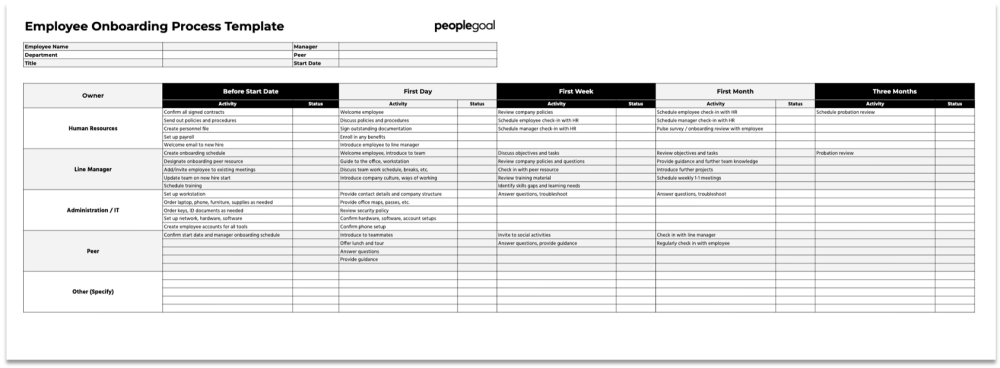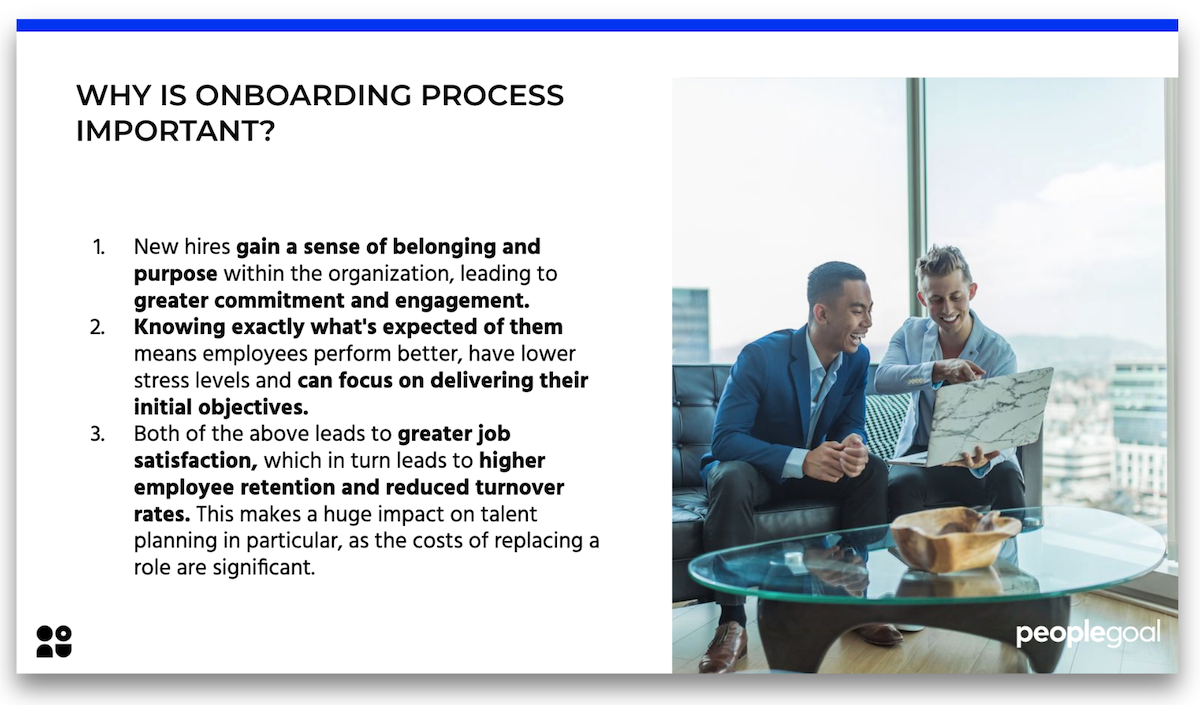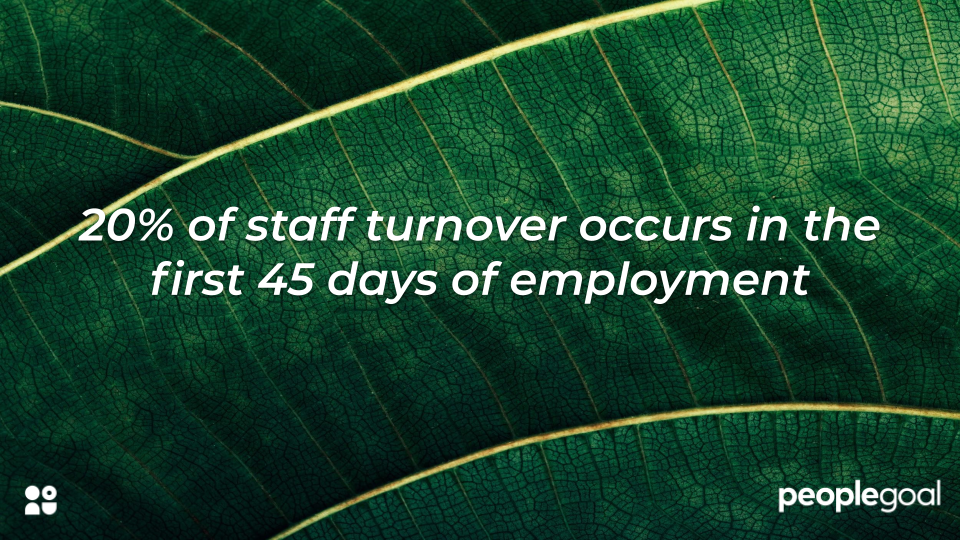First impressions count, and your onboarding process is one of the most important parts of the employee lifecycle. Having a smooth and well-organized start gives new hires a sense of purpose, and makes them feel welcome and supported. There are many people involved in the onboarding process who need to be aware of what’s happening at every stage, and this can be a daunting task for the organizer (usually in HR). We’ve created an easy-to-customize onboarding process template to get you started, with tips and guidance to make the full onboarding process as smooth as possible.
Download the Onboarding Process Template for Google Sheets and Excel here.

Why is the onboarding process important?
If you’ve ever had a bad experience joining a new company, you’ll likely have known this from day one. A disorganized process leads to confusion, uncertainty and a general bad taste for a new hire. So what are the benefits of getting onboarding right, and why does it matter?
- New hires gain a sense of belonging and purpose within the organization, leading to greater commitment and engagement.
- Knowing exactly what’s expected of them means employees perform better, have lower stress levels and can focus on delivering their initial objectives.
- Both of the above leads to greater job satisfaction, which in turn leads to higher employee retention and reduced turnover rates. This makes a huge impact on talent planning in particular, as the costs of replacing a role are significant.

New hires can take up to five months to settle in and achieve their full productivity, and that’s a long time to invest in someone who may not be sticking around past their probation. The quicker and more widely you can integrate an employee into the company culture and ways of working, the easier they’ll find their feet and get down to contributing to the team success. Creating a clear onboarding process template will help you to plan effectively and keep on top of regular check-ins with your new employees.
Our post on 5 key employee onboarding process steps to master will help you to construct an onboarding timeline, and give you further tips and guidance in creating an outstanding onboarding experience.
What should you include in your own onboarding process template?
An onboarding checklist will help you to plan for the tasks and activities common to every new hire, so that important milestones are not left up to the manager’s discretion or forgotten entirely. While each job role will have its own unique requirements, all new hires will need to be up to speed in these core areas:
- Contracts, policies and procedures
- Company culture and ways of working
- Administration: workspace, equipment, office access
- Introduction to their job role, skills required and initial objectives
- Awareness of the wider team, joint projects and shared responsibilities
To help you achieve this for your new hire, there are a number of key people who’ll need to be involved in the onboarding process right from the beginning:
- Human Resources: responsible for contract negotiations, personnel management, payroll and employee wellness.
- Line Manager: responsible for mentoring, guiding and supporting the new hire in their job role. The line manager should be the one to introduce the employee to the team, their projects and ways of working. The line manager should schedule weekly check-ins at least for the first few weeks of a new hire’s contract.
- Peer: appointing a colleague to be the new hire’s friendly face and go-to guide is an easy way to make a new hire welcome, and give them a relaxed space to ask questions and figure out the company culture at their own pace.
- Administration/IT: making sure an employee has all the equipment needed to perform their job effectively.
- Senior management: depending on the size of the organization, a one-on-one meeting with a senior leader is a great motivator to a new hire, and a chance to ask more big-picture questions to get a sense of the organization’s direction.
You can use our Onboarding Process Template as a starting point to customize your own onboarding checklist. The template covers common key tasks and activities, and who’s responsible for each. Use the drop-down selects to indicate an activity status and keep on top of all the small tasks needed to create an efficient and effective onboarding period for your new hire. Also, check out this quick video to get a better idea about the process:
Want to learn more about how onboarding impacts employees and the wider business? Head over to our Essential Guide to Employee Engagement to understand just what impact employee engagement has on wellness, productivity and profitability.
Ready to 3x Your Teams' Performance?
Use the best performance management software to align goals, track progress, and boost employee engagement.






